In today’s fast-paced world, where remote work and flexible schedules are becoming the norm, having a dedicated home office is essential for productivity and focus. However, not everyone is fortunate enough to have a spacious area for a home office. If you find yourself in a small living space, don’t worry! With a bit of creativity and strategic planning, you can transform even the tiniest nook into a functional and inspiring workspace. In this article, we will explore 10 space-saving ideas for a small home office that will help you maximize your area while maintaining style and comfort.
“`html
| Feature | Details |
|---|---|
| Wall-Mounted Desks | Maximize floor space by using vertical wall space. |
| Multi-Functional Furniture | Use items that serve multiple purposes, like a desk that doubles as a bookshelf. |
| Storage Solutions | Incorporate cabinets and shelves to keep the workspace organized. |
| Compact Office Equipment | Choose smaller devices like mini printers or all-in-one machines. |
| Under-Desk Storage | Utilize the space under the desk for filing cabinets or rolling carts. |
| Lightweight Chairs | Select chairs that are easy to move and store when not in use. |
| Vertical Organizers | Use wall-mounted organizers to keep supplies within reach without taking up desk space. |
“`
1. Choose Multi-Functional Furniture
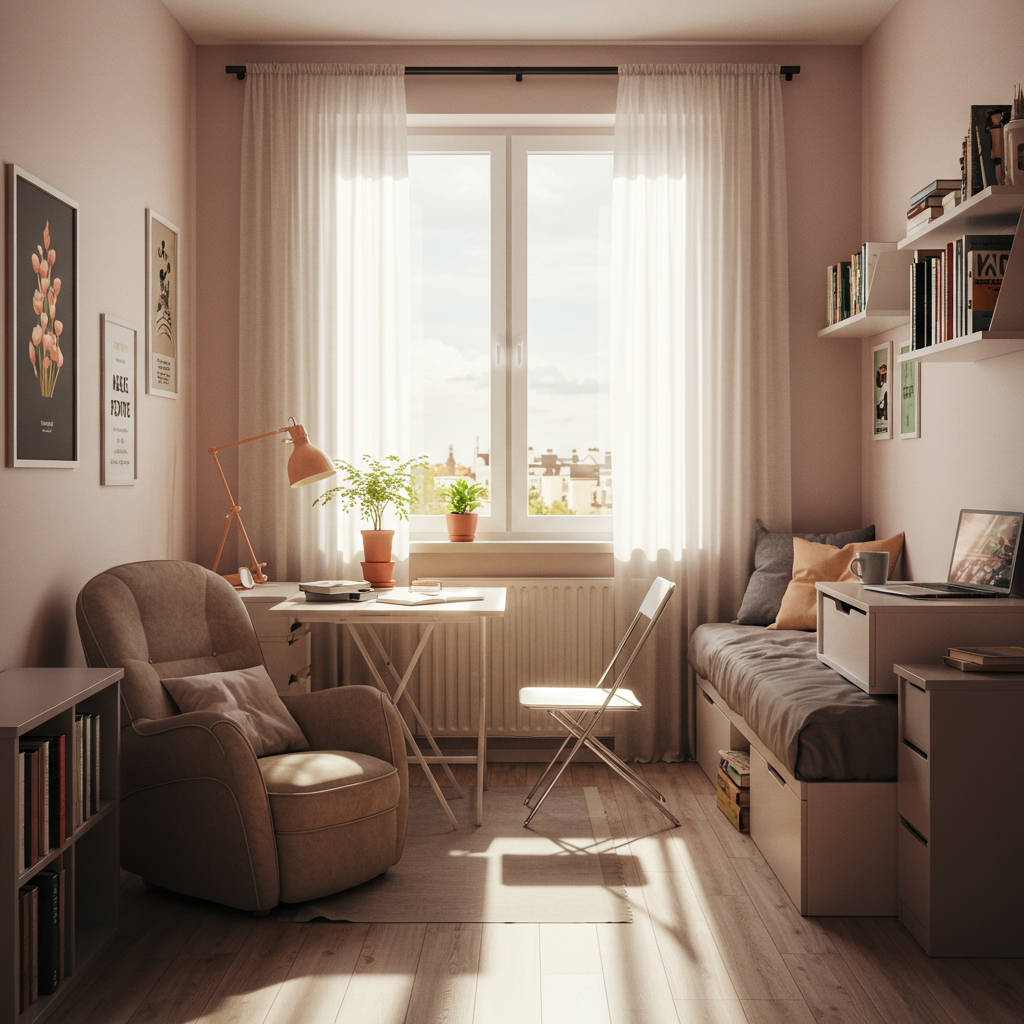
One of the best ways to save space in a small home office is by selecting furniture that serves multiple purposes. Consider a desk that doubles as a bookshelf or a coffee table with hidden storage. A foldable desk can be easily tucked away when not in use, allowing you to reclaim your space. Additionally, opt for chairs that can be stacked or stored away when they’re not needed, making your office versatile and less cluttered.
2. Utilize Vertical Space
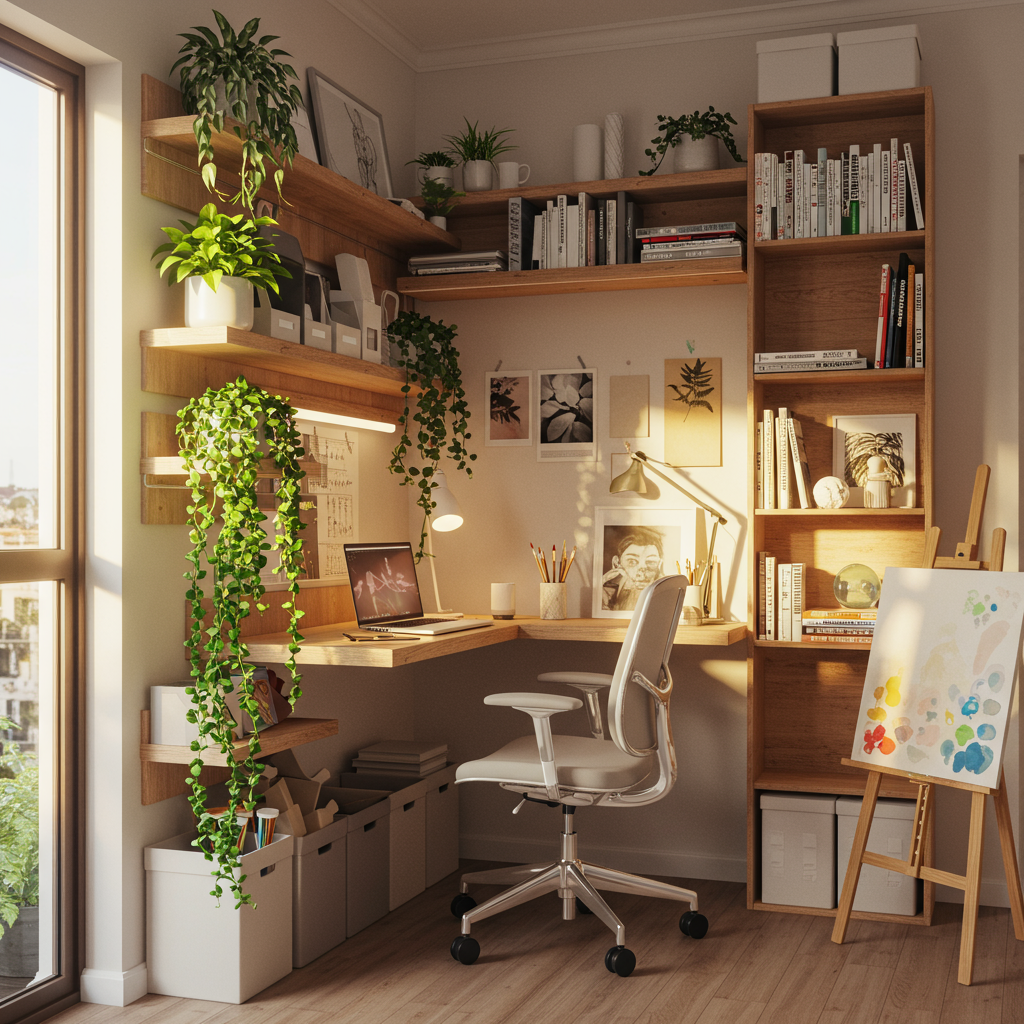
When floor space is limited, think vertically! Installing shelves above your desk can provide ample storage for books, office supplies, and decorative items. Wall-mounted organizers and pegboards are excellent for keeping frequently used tools and documents within reach while freeing up valuable desk space. Vertical storage not only maximizes the area but also adds visual interest to your walls.
3. Create a Corner Office
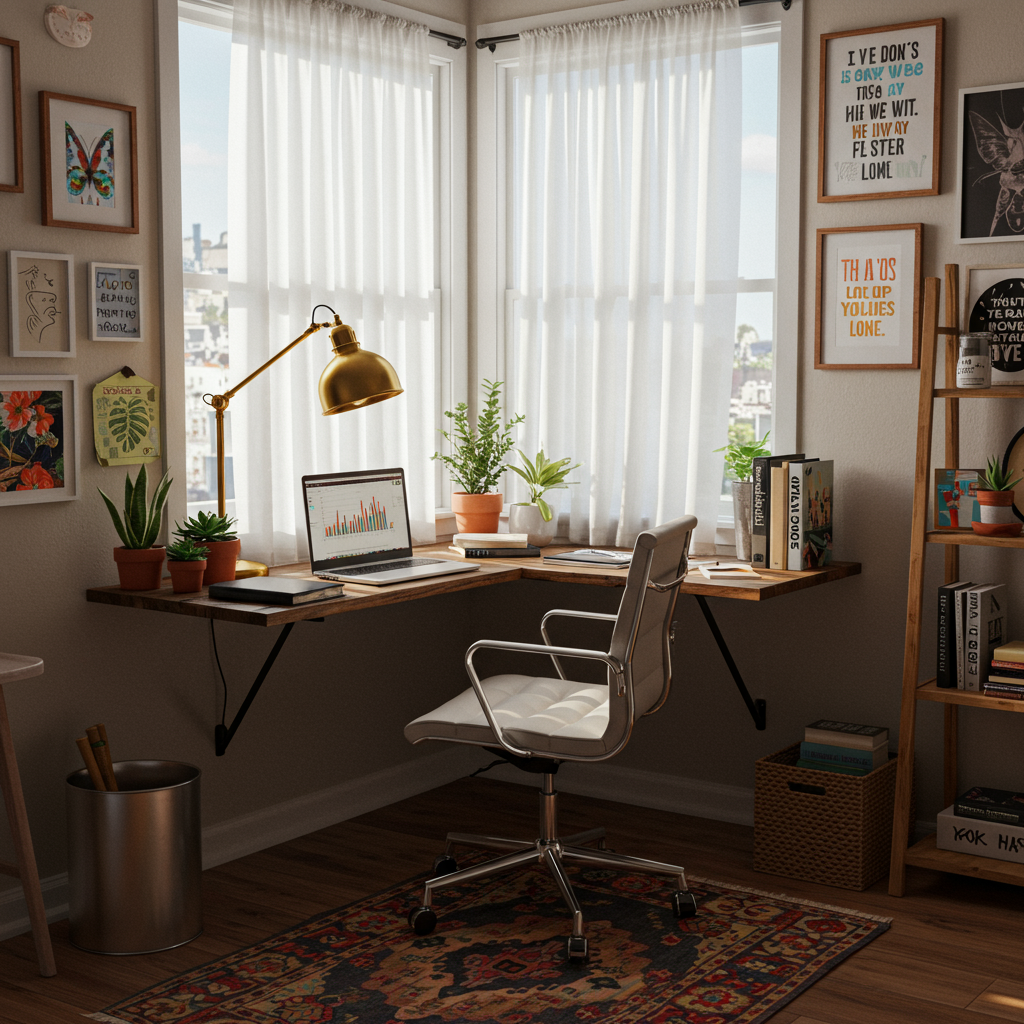
If you have an empty corner in your home, consider turning it into a cozy office nook. A corner desk can fit snugly into this space, allowing you to make use of an area that might otherwise go unused. This layout can create a sense of separation from the rest of your living space and can be a perfect spot for focusing on your work. Add some floating shelves above your corner desk to enhance functionality and style.
4. Go for Compact Desks
When choosing a desk for your small home office, look for compact designs that fit your space without sacrificing functionality. Desks designed for small spaces often come with built-in storage options, such as drawers or shelves, which can help keep your workspace organized. A minimalist desk with clean lines can also help create an open and airy feel, making your office look less cramped.
5. Embrace Minimalism
Less is often more, especially in a small home office. Embracing a minimalist aesthetic can help you reduce clutter and distractions, leading to a more productive work environment. Keep only the essentials on your desk and store away items that you don’t use daily. Select a limited color palette and simple decor to create a cohesive and serene workspace. Remember, a clean and organized area can significantly enhance your focus and creativity.
6. Use a Room Divider
If your home office is part of a larger room, consider using a room divider to create a sense of separation. A stylish screen can visually delineate your workspace from the rest of your living area while adding an element of design. Alternatively, you can use bookshelves or tall plants as dividers, which can also provide additional storage or greenery to your space.
7. Optimize Lighting
Good lighting is crucial for any workspace, especially in a small home office. Natural light can make a space feel larger and more inviting, so position your desk near a window if possible. For evenings or cloudy days, invest in compact desk lamps or wall sconces that provide ample light without taking up valuable surface area. Consider using bright, white bulbs to create an energizing atmosphere, helping you stay focused and productive.
8. Incorporate Hidden Storage
In a small home office, every inch counts, which is why hidden storage solutions are a must. Look for desks with built-in cabinets or drawers that can keep your office supplies out of sight. Decorative boxes or baskets can also be used to store items on shelves while maintaining a tidy appearance. By concealing clutter, you can create a more organized and visually appealing workspace.
9. Personalize Your Space
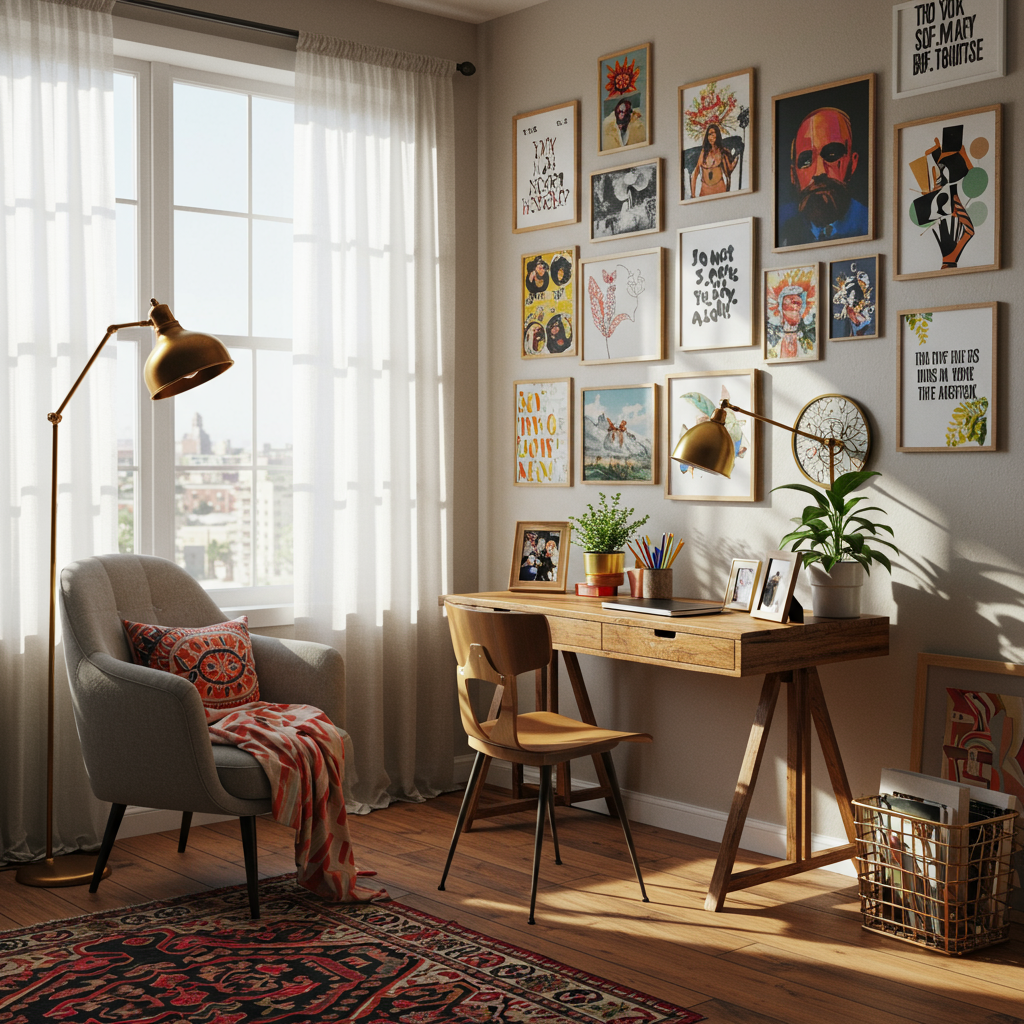
While functionality is key, don’t forget to infuse your personality into your small home office. Choose artwork, plants, or decorative elements that inspire you. A well-curated space can motivate you to work and help create a positive atmosphere. Just be mindful of the amount of decor you use, as too many items can make your office feel cramped.
10. Implement Technology Wisely
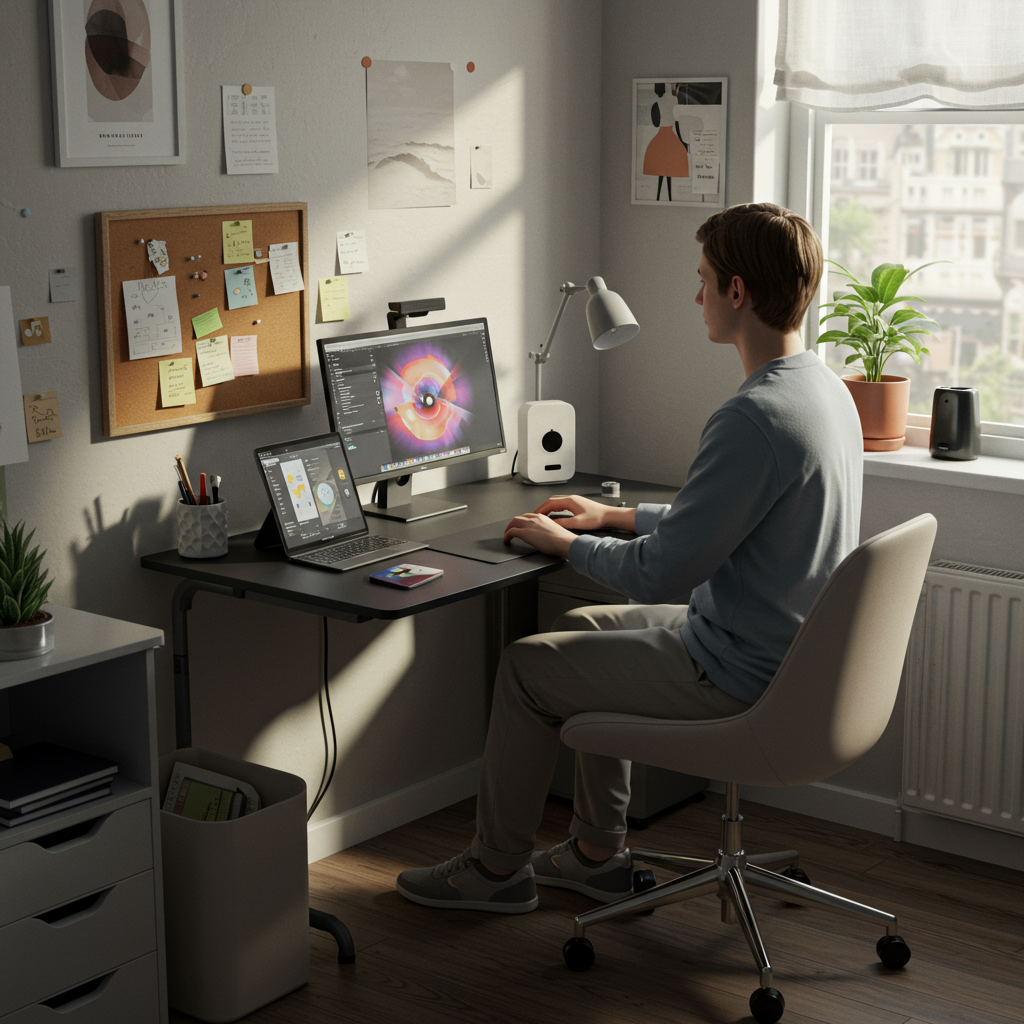
Finally, consider how technology can either enhance or detract from your small office setup. Choose compact devices, such as a wireless printer or a laptop, to minimize the footprint of your tech. Use cable organizers to keep cords under control and prevent them from cluttering your workspace. Streamlining your technology can help maintain a clean and functional environment.
With these ten space-saving ideas, you can create a small home office that is both efficient and enjoyable to work in. By maximizing your space and incorporating clever solutions, you can design a workspace that meets your needs while also reflecting your personal style. Stay tuned for the next part of this article, where we will delve deeper into more tips and tricks for optimizing your small home office.
11. Choose the Right Color Scheme
Color plays a significant role in making a space feel larger and more inviting. When designing your small home office, opt for light, neutral colors on the walls and furniture. Soft whites, light grays, and pastel shades can create an airy atmosphere and reflect natural light, making the room feel more spacious. If you’re keen on adding some personality, consider using bold colors in your decor items, such as cushions, art, or desk accessories. This way, you can maintain a light backdrop while still expressing your style.
12. Add a Mirror
Mirrors are a powerful design tool in small spaces. They can create the illusion of depth and make a room feel more expansive. Position a mirror opposite a window to reflect natural light, brightening the area and enhancing the feeling of openness. Choose a decorative mirror that complements your aesthetic, whether it’s modern, vintage, or bohemian. Not only will it serve a practical purpose, but it will also act as a stylish focal point in your office.
13. Invest in Quality Ergonomics
While space-saving is essential, don’t overlook the importance of comfort in your home office. Investing in ergonomic furniture can significantly improve your productivity and well-being. Look for a chair that supports good posture and a desk that allows for comfortable positioning of your laptop or monitor. By prioritizing ergonomics, you can prevent discomfort during long working hours, ensuring that your small office remains a pleasant place to work.
14. Create a Zen Atmosphere
To cultivate a peaceful work environment, consider incorporating elements of biophilic design. This approach focuses on connecting your workspace to nature, which can enhance your mood and productivity. Add indoor plants to your small home office to purify the air and create a calming atmosphere. Choose low-maintenance options like succulents or snake plants that thrive in various lighting conditions. Additionally, consider using natural materials in your decor, such as wood or stone, to enhance the organic feel of your office space.
15. Maximize Desk Space with Organizers
Keeping your desk organized is vital in a small workspace. Utilize desk organizers, trays, and drawer dividers to streamline your supplies and keep everything in its place. Look for stylish options that match your decor to keep your desk looking neat and inviting. Consider vertical desk organizers that can hold documents, pens, and other essentials without taking up too much space. By creating an organized desktop, you can reduce distractions and increase your efficiency.
16. Use Floating Desks
If traditional desk options feel too bulky for your space, consider using a floating desk. These wall-mounted designs take up little room and can be installed at your preferred height. A floating desk can provide a clean and modern look while allowing you to have a dedicated work surface without sacrificing valuable floor space. Pair it with sleek wall shelves above for added storage and display options, creating a cohesive and stylish workspace.
17. Create a Calendar or Vision Board
Staying organized and focused is crucial in a small home office. A calendar or vision board can serve both as a practical tool and an inspiring piece of decor. Use a bulletin board or corkboard to pin important deadlines, goals, and motivational quotes. This not only helps you keep track of tasks but also adds a personal touch to your workspace. Customize your board with colors and designs that align with your aesthetic, keeping your office both functional and visually pleasing.
18. Incorporate Sound Management Techniques
Noise can be a significant distraction, especially in a small home office. Consider sound management solutions to create a quieter environment. Use rugs or carpets to absorb sound and reduce echo, or hang acoustic panels on the walls. Soft furnishings like curtains can also help muffle external noise. If you enjoy working with background sounds, invest in quality headphones or a white noise machine to help maintain focus without disturbances.
19. Designate a Clear Work Schedule
In a small home office, it’s essential to create boundaries between your work and personal life. Establishing a clear work schedule can help you maintain focus during your work hours and allow for relaxation afterward. Use a visual cue, such as a specific desk setup or lighting adjustment, to signal the start and end of your workday. This practice not only helps with productivity but also ensures you enjoy your home space beyond your work commitments.
20. Regularly Reassess Your Space
As your work habits and needs evolve, so should your home office. Make it a routine to periodically reassess your workspace. Evaluate what’s working and what isn’t, and don’t hesitate to make changes. Perhaps you need more storage as your projects grow, or maybe you want to refresh your decor to keep your space inspiring. Flexibility is key in a small home office, and adapting your environment can lead to enhanced productivity and comfort.
21. Incorporate Technology for Virtual Meetings
The rise of remote work has made virtual meetings a regular part of everyday business. To optimize your small home office for video calls, invest in a high-quality webcam and microphone. A good camera can enhance your video quality, while a clear microphone ensures your voice is heard without background noise. Make sure your background is tidy and professional; consider using a plain wall or an aesthetically pleasing backdrop. You can also use a virtual background feature, but ensure that your internet connection is stable to avoid disruptions during meetings.
22. Utilize a Small Whiteboard or Chalkboard
A small whiteboard or chalkboard can be a versatile addition to your small home office. Use it for jotting down ideas, reminders, or to-do lists that you can easily update. Position it where you can see it from your desk to keep your goals and tasks top of mind. This not only helps you stay organized but also adds a touch of creativity to your workspace. Opt for a design that complements your décor, whether it’s a sleek modern look or a more rustic design.
23. Create a Cozy Atmosphere with Textiles
Textiles can play a significant role in creating a warm and inviting workspace. Consider incorporating a soft area rug to delineate your office area and provide comfort underfoot. Adding cushions to your chair can enhance comfort and style, while curtains can soften the space and control light. Choose fabrics in colors and patterns that inspire you, and rotate them seasonally to keep your office feeling fresh and engaging. A cozy atmosphere can boost your mood and motivation, making your workspace a pleasure to spend time in.
24. Use Labels for Organization
Labeling items in your small home office can greatly enhance organization and efficiency. Use clear, simple labels on storage boxes, folders, and shelves to quickly identify where everything is located. This minimizes time spent searching for items and helps maintain a tidy workspace. You can create customized labels that match your office aesthetic, giving your space a cohesive look. A well-organized office promotes clarity of thought and can significantly reduce stress.
25. Set Up a Filing System
Paper clutter can quickly overwhelm a small home office. Establishing an efficient filing system is crucial for staying organized. Use a combination of digital and physical filing methods. Scan documents and save them to cloud storage to reduce physical paper. For the documents you need to keep on hand, opt for a compact filing cabinet or a stylish file box that fits under your desk. Color-code your files to make locating information quicker. The right filing system allows you to maintain order and focus on your work without getting lost in paperwork.
26. Personalize with Scent
The right scent can make your small home office feel more welcoming. Consider using essential oil diffusers, scented candles, or incense to create a calming atmosphere. Scents like lavender and eucalyptus can promote relaxation and focus, while citrus scents can provide an energizing boost. Just be cautious not to overload your space with strong fragrances that could become distracting. A pleasant aroma can enhance your overall work experience and contribute to a positive mindset.
27. Implement a Standing Desk Option
Incorporating a standing desk or a height-adjustable desk can be a game-changer in a small home office. These desks allow you to alternate between sitting and standing, promoting better posture and reducing fatigue. Many modern designs are compact and stylish, fitting seamlessly into limited spaces. If a full standing desk isn’t feasible, consider a sit-stand converter that can be placed on your existing desk. This flexibility in your workspace can help maintain your energy levels throughout the day.
28. Use Portable Carts for Additional Flexibility
Consider using a portable cart to add extra workspace or storage that can be moved as needed. A rolling cart can hold office supplies, a printer, or even act as a mobile workstation when you need to change your environment. Choose a cart that matches your décor and fits comfortably within your space. This added flexibility can make a significant difference, allowing you to adapt your workspace to different tasks or projects without permanent changes.
29. Create a Work Journal
A work journal can serve as a valuable tool in your small home office. Use it to track your daily tasks, set goals, and reflect on your progress. This practice can help you stay organized and focused while also providing a creative outlet. Consider including sections for brainstorming ideas or jotting down inspirations that come to you throughout the day. By keeping your thoughts organized in one place, you can enhance your productivity and creativity.
30. Foster Community Through Shared Resources
If you live with others, consider sharing office resources to maximize your space. Whether it’s a joint whiteboard, shared printer, or communal filing system, fostering a sense of community can make working from home more enjoyable. Establish rules for sharing resources to ensure everyone’s needs are met. By collaborating, you can create a more dynamic and stimulating work environment, turning your small home office into a hub of creativity and productivity.
